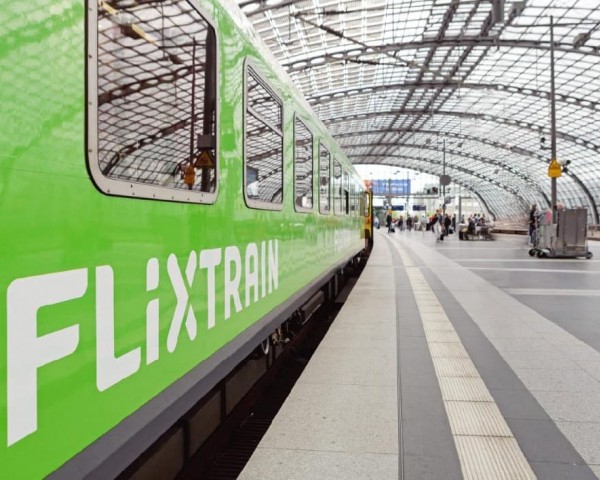FlixTrain, a part of Flix SE, is getting ready to change how we travel long distances by train in Germany and other countries. They’re putting a lot of money, about €2.4 billion, into buying 65 new high-speed trains.
The announcement was made in May 2025, and this order, for super modern trains built by Talgo in Spain and using Siemens Vectron locomotives, shows FlixTrain really wants to grow its network and make rail travel better all over Europe. They’ve already spent over €1 billion, so this is a big step toward travel that’s not only good for the environment but also easy to use and new.
FlixTrain’s Big Move
André Schwämmlein, who helped start Flix and is now the CEO, said in a press release that they’re thinking long-term with FlixTrain and planning to offer a lot more services soon. He added that getting more trains means a new time for rail travel in both Germany and Europe. The money they’re putting in, which also covers keeping the trains running well, shows FlixTrain is serious about making passengers happy, being efficient, and getting bigger across Europe.
These new trains can go up to 230 km/h and are made to be the best for long train rides in Germany. Something new is that people can get on without any trouble, which is a first in Germany for long-distance trains. They also have great air conditioning, fast Wi-Fi, and systems that give passengers useful information. The goal is to make rail travel more enjoyable, open to everyone, and attractive to many different people.
Cutting-Edge Technology and European Ambitions
The FlixTrains are based on technology that’s already working well in Denmark and on Deutsche Bahn’s ICE L trains. But they’ve been improved to be even more efficient and reliable. The Siemens Vectron locomotives that power the trains can also work in different countries, so FlixTrain can go beyond Germany and into other parts of Europe. This means FlixTrain can compete in a market where more and more people want to travel in ways that are good for the planet.
FlixTrain isn’t just thinking about Germany. Schwämmlein said they see FlixTrain as something for all of Europe and want it to be available in other countries too. This fits with the idea of connecting train and bus routes to make it easy and eco-friendly to travel across different countries.
Building on a Strong Foundation
FlixTrain already goes to 50 cities directly and lets people book trips to 650 places by working with local transport companies. If you add FlixBus, which has almost 300 stops in Germany, Flix SE gives you a special way to travel that combines long bus rides with fast train trips. This lets passengers plan trips that are flexible and work well.
Adding 65 new trains will really help FlixTrain carry more people and reach more places, so they can meet the growing demand for travel that doesn’t harm the environment. Rail travel is becoming more popular because it produces less carbon than flying or driving. FlixTrain’s investment is taking advantage of this trend, offering a modern option to traditional train companies like Deutsche Bahn.
A Game-Changer for European Rail
The €2.4 billion investment isn’t just about buying more trains; it’s a statement. By focusing on making travel easy for everyone, comfortable, and connected across borders, FlixTrain is setting itself up to be a leader in the European train market. The easy boarding feature is especially important, making sure that people with disabilities can travel without problems. And the fast Wi-Fi and advanced systems on board are great for today’s travelers, whether they’re working on the go or traveling with their families.
As FlixTrain starts using its new trains, it’s likely the company will increase competition in the region. Rail transport in Europe is evolving, presenting challenges to traditional companies while also sparking new ideas. Improved train interoperability across borders supports the EU’s vision of an interconnected and eco-friendly transportation system.

